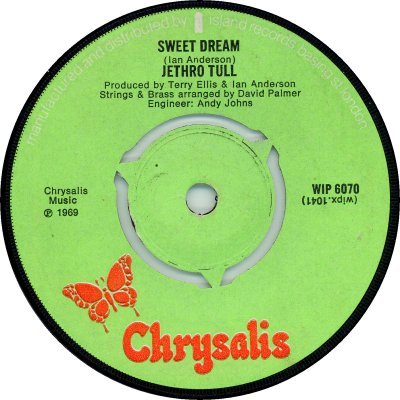
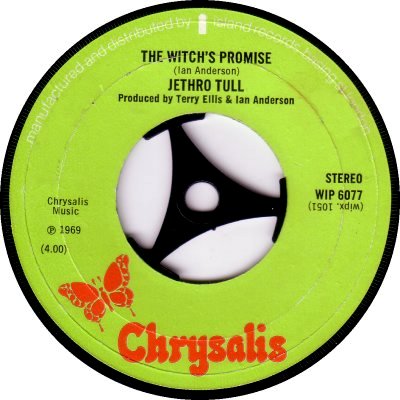
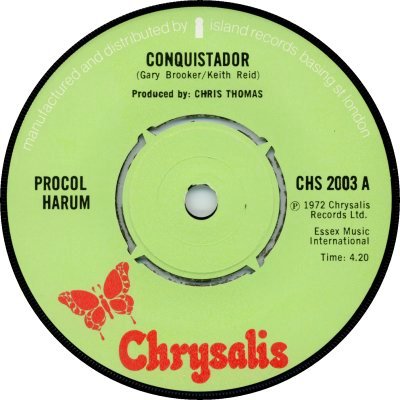
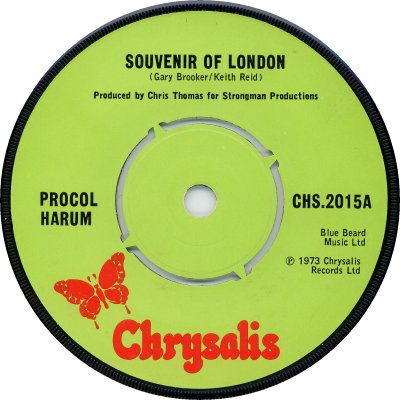
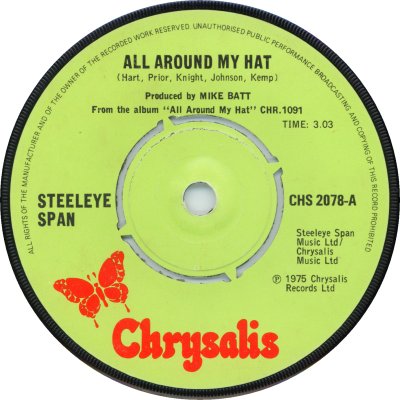
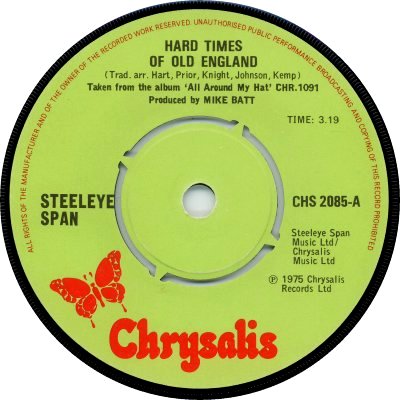
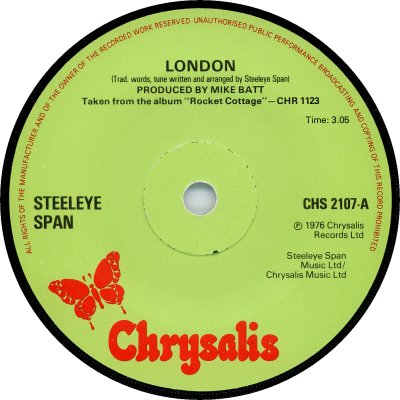
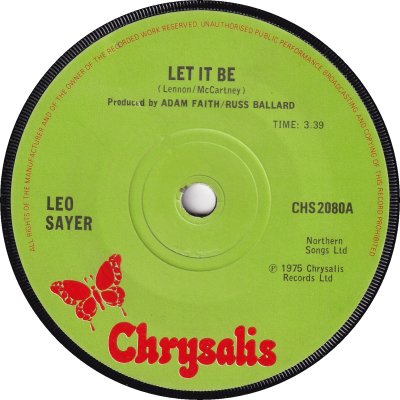
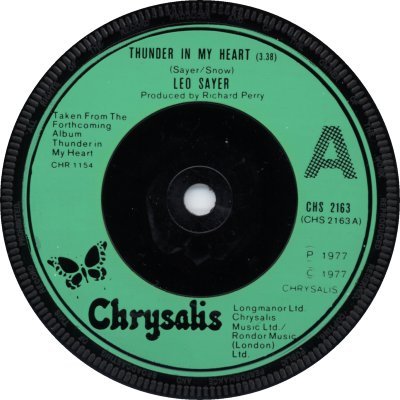
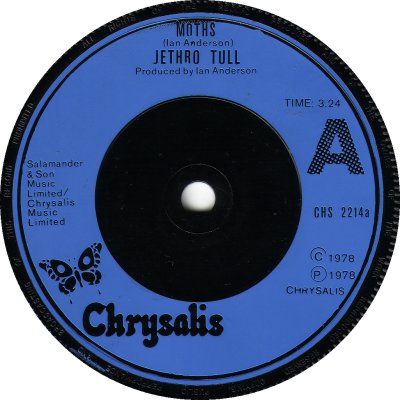
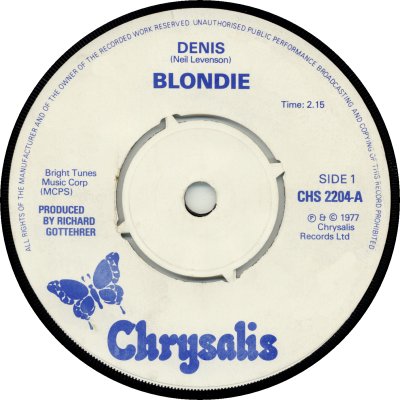
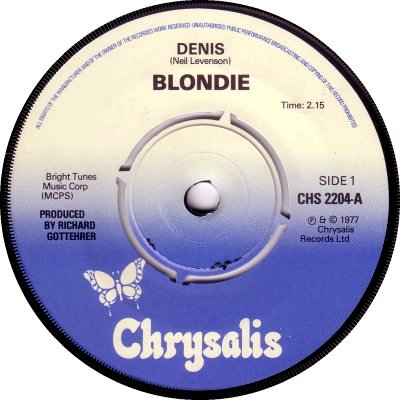
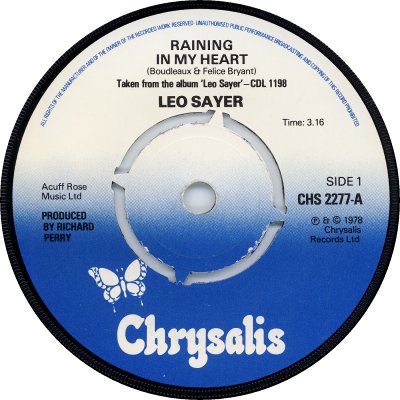
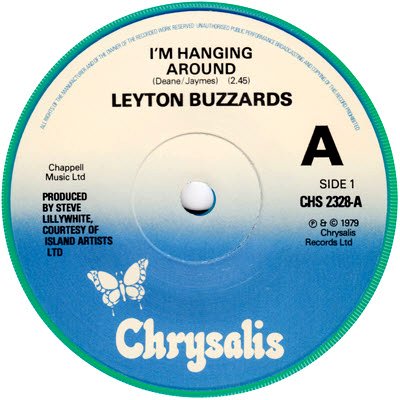
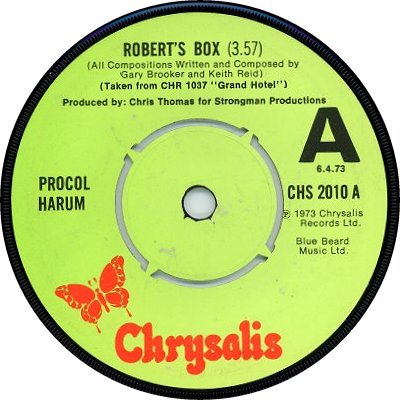
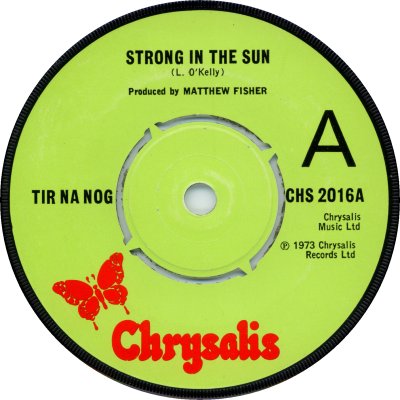
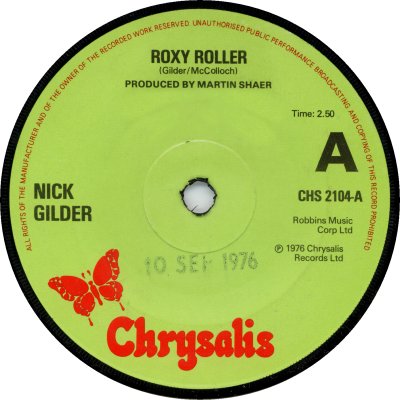
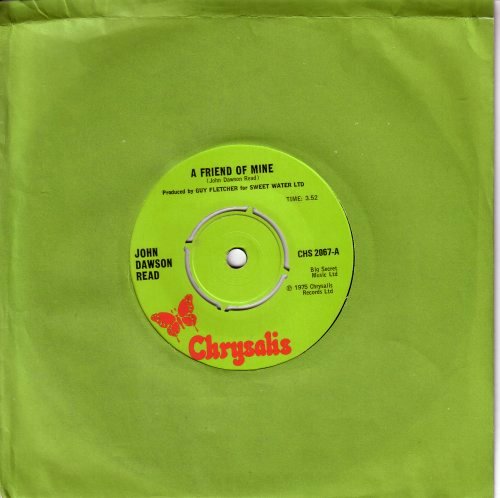
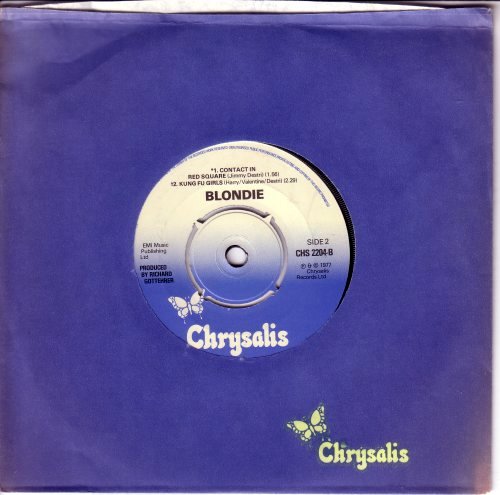
Chrysalis was the brainchild of managers / promoters Chris Wright and Terry Ellis, partners in the Ellis Wright agency. Late in the '60s they agreed a licensing deal with Island for their clients; the agreement stated that if the pair achieved a certain number of hits within a set period they would be given their own label. The hits duly arrived, and Chrysalis was born. It received its first mention in the trade press in 'Record Retailer' of the 11th of October 1969, which said that it was to be distributed by Island and that its records would share Island's catalogue numbers. Jethro Tull's single 'Sweet Dream' b/w '17' (WIP-6070) was due out on the 17th of October, and the first albums were expected to follow around Christmas. 'Sweet Dream' provided the company with an immediate Top 10 placing, reaching the No.7 spot, and the follow-up, 'The Witch's Promise' b/w 'The Teacher' (WIP-6077; 1/70), improved on that by going to No.4.
Chrysalis appears to have seen itself as a 'serious music' company, and it made an early attempt to broaden its scope. 'RR' of the 13th of February 1971 reported that it intended to launch an independent publishing / label offshoot, 'Butterfly Music & Records'; no outlet had been arranged at that point, but Terence Clarke had been signed to the label. Matters had progressed by the 12th of June: 'RR' said that Butterfly was to be used as an outlet for 'Pop' material which was not 'suitable' for the main Chrysalis label. The first releases were due out in the autumn, and were to be singles by David Bowie and Mike D'Abo. Sadly, the following month brought news that the 'butterfly' trademark was already in use and was owned by a firm called 'First Class'. 'RR' of the 31st of July described this as 'Bad news for Chrysalis', and, indeed, that was the last that was heard of Butterfly as a label. Singles by Clarke, Bowie and D'Abo with publishing credits to Chrysalis and / or Butterfly Music came out, but on other labels - Polydor, RCA and A&M respectively. It's a mildly intriguing thought that, but for the trademark problem, all those David Bowie hits might have come out on Butterfly instead of RCA. Just as an aside, Chrysalis did eventually put out records on a Butterfly label, towards the end of the decade, but they were licensed from an American company of that name - see 'Butterfly (CHS prefix)'.
The setback with Butterfly didn't put Chrysalis off its stride. The spring of 1972 saw its records being given their own numerical series, perhaps in response to an increase in the number of releases: singles were now numbered in the CHS-2000s. 'Music Week' of the 5th of August noted that in addition to making and issuing records the company was involved in artist management, publishing and agency work, though it closed its agency business late in 1975 ('MW', 13th December). It remained primarily an album-focused label for a while, with only the occasional Singles Chart hit, but in December 1973 it enjoyed a belated Christmas success with Steeleye Span's 'Gaudete' b/w 'The Holly And The Ivy' (CHS-2007; 11/72), a reissue from the previous year. More importantly it found its first consistent hit-maker in Leo Sayer, who took 'The Show Must Go On' b/w 'Tomorrow' (CHS-2023; 11/73) to the No.2 position and went on to provide a string of hits including the company's first No.1, 'When I Need You' b/w 'I Think We Fell In Love Too Fast' (CHS-2127; 1/77).
Chrysalis remained under Island's wing until the summer of 1977, at which point it opted to move. Its records had been handled by Island's sales representatives, but 'MW' of the 19th of May of that year reported that it was forming a joint sales force with another prominent independent, Arista (q.v.); in addition it was involved with talks with EMI about its current manufacturing and distribution deal, which was due to expire on the 30th of June. The talks must have failed, for Chrysalis moved to Phonodisc on the 1st of July. According to 'MW' of the 25th of June, it was the first time that Phonodisc had agreed a direct manufacturing / distribution deal with any independent company. The arrangement must have been satisfactory, as it was extended in 1979 ('MW', 24th February). The joint sales force with Arista came into being; named 'Tandem Record Sales' it operated out of Phonodisc's headquarters at Chadwell Heath ('MW', 25th June 1977).
The second half of the '70s found Chrysalis establishing itself as a major Singles Chart force. Punk band Generation X supplied seven hits from 1977 to 1981 but only broke into the Top 20 once, with 'King Rocker' b/w 'Gimme Some Truth' (CHS-2261; 1/79), and Frankie Miller, Lee Garrett, Jethro Tull, The Babys, Racing Cars and Steeleye Span all chipped in, but the undoubted jewel in the company's crown was Blondie. The group's second (maxi) single for Chrysalis, 'Denis' b/w 'Contact In Red Square' and 'Kung Fu Girls' (CHS-2204; 2/78) stalled just short of the top spot, but the run of thirteen singles which followed it included five No.1s. Chrysalis went on to become one of the most successful, and most respected, of the independent record companies. Chris Wright bought out Terry Ellis in 1985; he sold Chrysalis Records to EMI in 1991 but retained the publishing arm, Chrysalis Music.
The company used three different kinds of label in the decade under consideration, with some minor variations. The familiar red-on-green type was pressed by Phonodisc until August 1970, and had either a three-pronged push-out centre (1) or, more usually, a large central hole (2). From August onwards Island turned to EMI for most of its manufacture, Chrysalis's products included. The white 'Manufactured and distributed by Island Records' at 12 o'clock (3) remained for a while, but it had disappeared by the time CHS-2009 came out, in early 1973 (4). A line of perimeter text appeared around the top in August 1975; for the first five releases - CHSes 2074, 2075, 2077, 2078 and 2080 - it was coloured black (5) but it very soon turned red, and it stayed that way while the green label lasted (6). As stated above, manufacture was usually by EMI, but every now and again CBS and Linguaphone were called upon, which resulted in the EMI-style narrow perforations disappearing: the seventh and fifteenth scans, with their steep bevel and 25mm raised central 'island' around the spindle hole, are Linguaphone pressings, while the eighth, with its 'bullseye' marks, is a CBS. From July 1977 Phonodisc took over manufacture and distribution, and injection moulded labels were introduced. The first two singles to have that kind of label, CHSes 2158 and 2159, were coloured blue, but the blue was replaced with green (9) from CHS-2160 to CHS-2200. The blue colour (10) returned with CHS-2204, in February 1978, and it saw the '70s out. Contract pressings of popular singles made during the Phonodisc years had paper labels, usually blue-and-white ones; the examples shown are by RCA (11, 12), Decca (13) and Pye (14). These were particularly necessary when coloured pressings were required, as was the case with the Pye one - James Denholm, who was kind enough to supply that scan, reports that his several coloured Chrysalis singles were all pressed by that company. The white label (11) seems to have been a one-off.
Promo copies were marked with a modest black 'A'. Early promos had a squat 'A' and the issue date (15); CHSes 2015 and 2016 had a taller, thinner 'A' and no date (16). The squat 'A' returned with CHS-2020, albeit a touch smaller (17), but the date didn't. There were no special labels for promos during the Phonodisc era, though some promo-only singles were pressed and bore the appropriate text. Presumably in order to give a family resemblance with Island's plain pink company sleeve of the time, green-labelled Chrysalis singles were given a plain pale-green sleeve (18), which gained a logo and turned blue in 1977, presumably at the same time that the labels turned from green back to blue (19). Distribution was handled by Island and EMI until October 1976, with Island serving the larger retailers and EMI supplying the others. On the 1st of October Island ceased its distribution service, leaving the job in the hands of EMI, which coped with it until Chrysalis moved to Phonodisc the following year. The CHS-2000 numbering remained unchanged during the transition from EMI to Phonodisc; the series was shared by singles on the Scratchy and Air labels (q.v. both). As usual, the discography below is gappy and only covers until the end of 1979, but many of the gaps are down to the numbers being used for overseas releases or not at all. Thanks to John Bramley for filling in some of the gaps and to James Denholm for reminding me of Generation X's biggest hit, which I'd somehow forgotten.



Copyright 2006 Robert Lyons.

